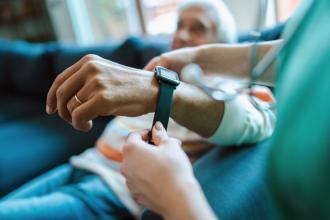Our favorite patients
“How’s my favorite patient doing today?”
“Oh, I’m fine, doctor, thanks for asking.”
“This is awkward, but I wasn’t talking about you, Mrs Smith. I was just wondering if you’d seen her.”
I love to tease my patients in this fashion, likely due to being dropped on my head as an infant. I do the same thing at the hospital, where I greet staff by asking how my favorite such-and-such is and then clarifying that I was talking about someone else. I also enjoy messing with the children in my practice by telling them that they are my favorite but that they shouldn’t tell their sisters or brothers because this is our secret. I am pretty sure this is the first thing they tell their siblings when they get home. I will even whisper it to each sibling while they are standing side by side. This can backfire—sometimes they mention that I told their siblings the same thing. Not missing a beat I point out that I had no choice because their siblings are so sensitive that if they knew the truth they would be devastated. Only once has a patient queried how I could be sure that she wasn’t the sensitive one. This patient is no longer in my practice because clearly she is too intelligent to be my under my care.
The truth is that we all have our favorite patients. Not that we don’t appreciate most of the people we take care of; it’s just that we connect more closely with certain individuals. Sometimes it’s as simple as resembling a relative (this can also be the reason why we have negative feelings toward some patients) or reminding us of an old friend. For me this connection is linked to an individual’s love of life and positive outlook. I am inspired by these patients’ passion for living life to the fullest and for being thankful for all that they have. Often, despite numerous hardships and obstacles, these people are happy and content. They face each day with a smile and often go beyond to share this joy with those around them. They have a soft spot in their hearts for those less fortunate and contribute with selfless philanthropy wherever they see an opportunity, so much so that I often learn about their acts of grace from others. They are friendly, self-assured, and don’t sweat the small stuff. When told about a potential life-ending diagnosis they remain calm and often consider the feelings of their family and friends before their own. They accept life’s fickle intricacies and try to make the best of all situations. In brief, these people represent the type of individual I aspire to be. I see the best version of myself reflected in their actions. It is an honor and privilege to serve as their physician.
Therefore, it is difficult and sad when I lose one of my patient mentors. These individuals are more like friends and I mourn their passing deeply. I was reminded of this after a recent death left me feeling melancholic for a few days. I realize that I’ve lost someone special, but I am comforted by the lessons gleaned throughout the years from my encounters with this gracious individual. Rest in peace my friend.
—DRR

